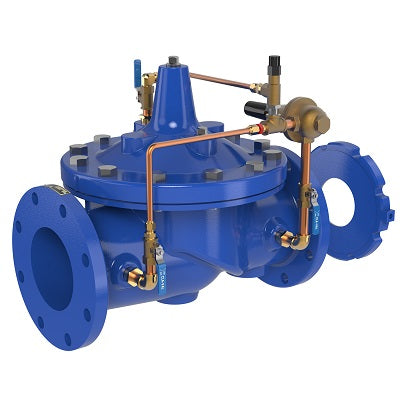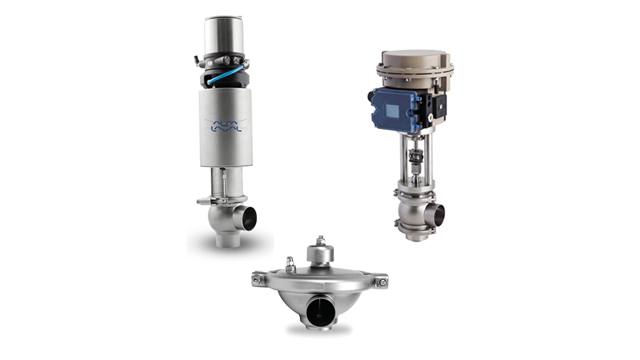Achieve Seamless Assimilation and Control With High Quality Building Automation Controls
In the realm of contemporary building management, the significance of top quality structure automation controls can not be overstated. Welcoming quality building automation controls is not just a matter of ease however a tactical imperative for organizations aiming to maximize their facilities' efficiency and sustainability.

Evolution of Building Automation Controls
Throughout the previous few decades, the evolution of constructing automation controls has substantially changed the way structures are taken care of and operated. Developing automation systems mainly concentrated on basic functions such as regulating air, air flow, and home heating conditioning (HVAC) systems. However, as technology progressed, these controls have become more innovative, enabling a larger series of structure systems to be incorporated and taken care of centrally.
The evolution of building automation controls has actually seen a shift towards even more intelligent systems that can adjust to transforming conditions in real-time. This versatility is vital for optimizing energy performance and making sure owner comfort. Furthermore, modern building automation controls now supply attributes such as predictive maintenance, remote monitoring, and data analytics, making it possible for facility managers to make data-driven decisions to boost structure efficiency.

Benefits of Quality Combination
The improvement in structure automation controls towards more intelligent systems has actually underscored the significant advantages of quality assimilation in maximizing building procedures and boosting overall efficiency. Quality integration of constructing automation controls offers numerous crucial advantages. It leads to boosted power effectiveness by permitting different systems to function together perfectly, ensuring optimum efficiency and decreasing power wastefulness. Top quality assimilation improves resident convenience and productivity by making it possible for customized control over ecological settings like lights, air, and temperature quality. This modification can lead to an extra comfy and conducive working or living atmosphere. Additionally, high quality integration simplifies maintenance and repairing processes, as all systems are interconnected and can be kept track of and controlled from a centralized interface. This central control additionally gives better visibility and insights right into building efficiency, enabling positive maintenance and optimization methods. Generally, the benefits of top quality integration in building automation controls are undeniable, providing boosted performance, convenience, and functional efficiency.
Boosted User Experience and Access
Enhancing customer interaction with structure automation manages via intuitive style and enhanced access boosts the total experience for passengers and facility supervisors alike. By focusing on user experience, building automation systems can become a lot more efficient and easy to use. Instinctive user interfaces, clear navigating, and adjustable settings encourage individuals to connect with the controls easily and successfully.
Access attributes play an important duty in making sure that all people, consisting of those with disabilities, can make use of the structure automation regulates easily. Including functions such as voice commands, tactile switches, and color-contrasted displays can boost ease of access and make the controls more comprehensive.
Furthermore, enhanced customer experience results in higher user complete satisfaction, increased productivity, and much better decision-making. Occupants can adjust ecological settings according to their choices, while center supervisors can effectively check and manage building systems - control valves. Overall, prioritizing customer experience and availability in building automation controls adds to a more efficient and smooth building setting for all stakeholders entailed
Sustainable Practices Through Automation

Moreover, automation can promote the combination of renewable resource sources such as solar panels or wind turbines right into building procedures. By immediately readjusting energy usage based on the accessibility of sustainable power, structures can additionally lower their dependence on non-renewable sources. This seamless combination of lasting techniques not only benefits the setting yet additionally enhances the total functional efficiency and cost-effectiveness of the structure. With automation, structures can line up with contemporary sustainability objectives and add to a greener future.
Future Trends in Structure Control Equipment
In anticipation of advancing modern technologies and progressing sustainability techniques, the trajectory of structure control systems is positioned to embrace cutting-edge options and transformative strategies. One prominent trend shaping the future of building control systems address is the raised combination of Expert system (AI) and machine understanding. These technologies enable buildings to adapt in real-time to altering problems, enhancing energy usage and boosting comfort for owners. In addition, the Net of Points (IoT) is reinventing structure control systems by attaching gadgets and sensing units to simplify operations and improve performance.
One more key fad is the emphasis on cybersecurity steps to shield against possible dangers to constructing automation systems. As buildings end up being a lot more interconnected, ensuring robust cybersecurity methods will be necessary to safeguard sensitive data and protect against unapproved access.
Moreover, the change towards cloud-based platforms is acquiring energy, enabling streamlined control and remote access to building systems. This facilitates simpler surveillance, maintenance, and updates, boosting the general efficiency and flexibility of building control systems. As innovation remains to advancement, these fads are anticipated to shape the future landscape of building automation controls, driving innovation and sustainability in the constructed environment.
Final Thought
In final thought, developing automation controls have actually developed substantially, using numerous advantages such as improved customer experience, availability, and sustainable techniques. Quality assimilation plays a vital function in accomplishing smooth control and efficient procedure of building systems. Future fads in structure control systems are likely to focus on more boosting automation capabilities for boosted power performance and general performance. It is important for structure proprietors Click This Link and operators to focus on the adoption of quality structure automation manages to enhance building operations and accomplish lasting sustainability objectives.
In the world of modern-day building management, the relevance of quality building automation controls can not be overemphasized. Generally, the advancement of building automation manages continues to drive technology in the building administration sector, providing brand-new opportunities for creating smarter and extra lasting buildings.
The development in structure automation controls in the direction of more intelligent systems has emphasized the significant advantages of high quality combination in maximizing building operations and enhancing overall efficiency. Generally, prioritizing customer experience and access in building automation controls contributes to a more seamless and efficient structure setting for all stakeholders involved.
It is important for structure proprietors and operators to prioritize the adoption my blog of high quality building automation manages to enhance building operations and achieve lasting sustainability objectives. - control valves